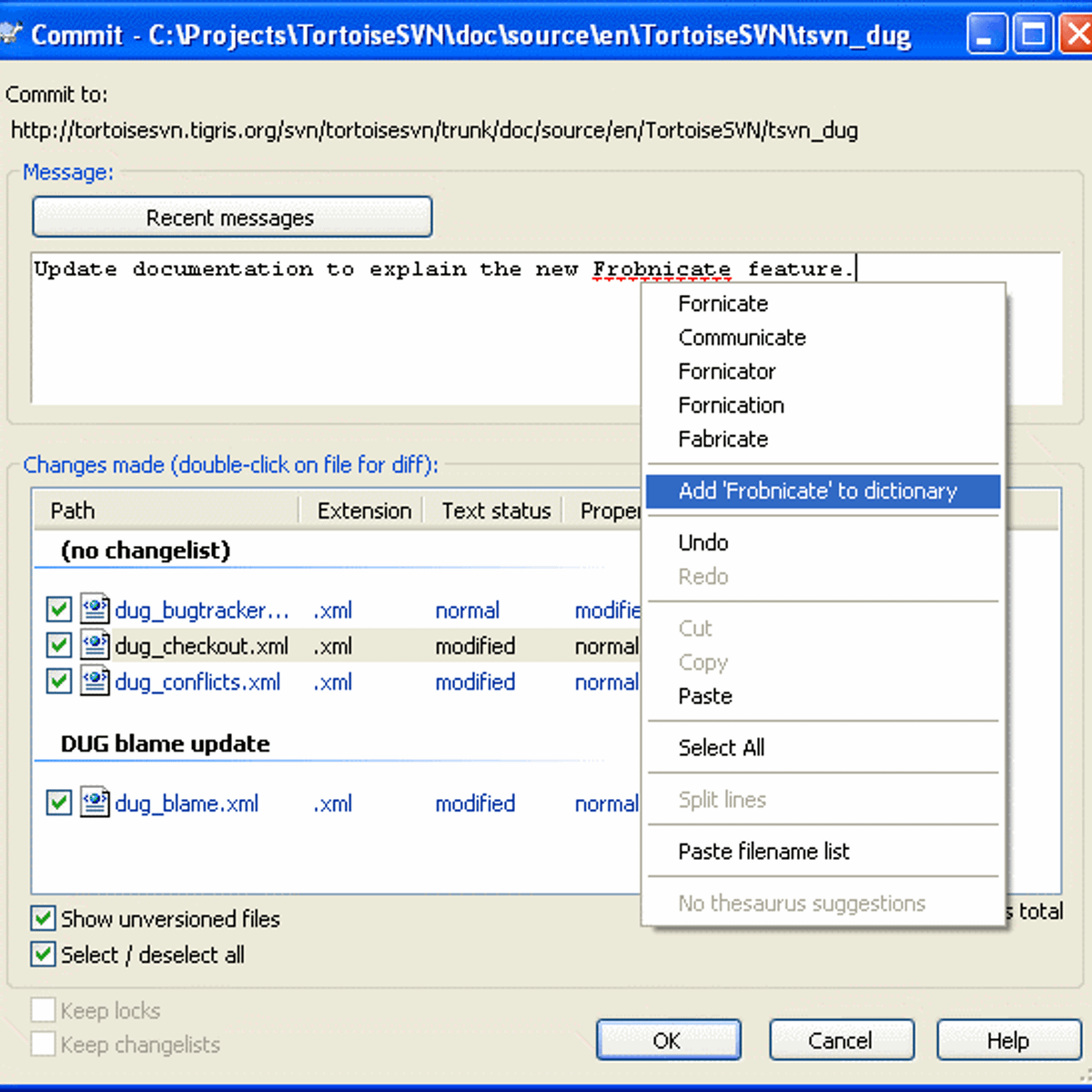
Mac OS X: SVN (Subversion) missing in Mountain Lion (10.8) Posted on August 16, 2012 November 10, 2014 by hb After upgrading to Mountain Lion, I realized that subversion (svn) was missing.
Th svnX open-source GUI client for Mac OS X provides support for most features of the standard svn client, including working with local working copies as well as a useful remote repository browser. It supports all Subversion versions from 1.4 through to 1.7 and is the best open-source GUI Subversion client for Mac OS. SnailSVN is a TortoiseSVN-like Apache Subversion (SVN) client for Mac OS X, implemented as a Finder extension. SnailSVN allows you to access the most frequently used SVN features, from the Finder context menu directly. SnailSVN also adds icon overlays to your SVN working copies in Finder. SnailSVN for mac中文版是一款与与访达集成的SVN客户端,SnailSVN 为 Finder 中的 SVN 工作副本文件添加状态图标,并在文件改动时自动更新状态图标,让工作副本中文件的状态一目了然,并允许你从 Finder 的上下文.
After upgrading to Mountain Lion, I realized that subversion (svn) was missing. Since I happened to install a new version of eclipse I first thought the problem was with my eclipse install but after wasting way too much time trying to fix it in eclipse I realized my problem was somewhere else…

So here’s what I did to fix it. SVN is part of the Command Line Tools. To install them go to Downloads for Apple Developers. This requires an Apple Developer ID. Getting one is free and only requires an Apple ID which you should all already have.
There select Command Line Tools (OS X Mountain Lion) and download the DMG file (it’s about 110 MB). Then open the DMG file, double click on Command Line Tools (Mountain Lion).mpkg, just keep clicking Continue / Agree / Install.
An alternative is to install Xcode. You can download it from the Mac App Store. Once Xcode is installed, you can go the Preferences > Downloads > Command Line Tools and install them.
The downside of this method is that you have to install Xcode which is a waste of space (1.5 GB download and 3.3 GB install) unless you develop for Mac OS X or iOS. But if like me you have Xcode installed anyway…
Once you’ve installed the Command Line Tools, you can check whether SVN is installed and whether you have the right version (1.6.18) opening a Terminal and typing the following:
That’s it !
Update: Another way is to use Homebrew or MacPorts.
With Homebrew installed, open a Terminal window and type the following:
If you get the following error:
You will need to type the following:
The replace the two lines with url and md5 by:
Save and rerun the install of subversion. If you get the following error message:
This means that your HomeBrew installation should be updated. It should fetch subversion 1.7.5 instead of 1.7.4. You can update it with the following command:

See Full List On Wikihow.com
Then rerun the subversion install.

If the installation of subversion or an upgrade to a newer version gets stuck (this happens to me every time), with the following last line written to the console:
Just kill it with CTRL-C and restart it. In my case, it always gets stuck for hours the first time and works the second time…
After the install, you might see when running svn –version that it doesn’t say 1.7.5. This is because the new version is installed in /usr/local/bin and there is an older version in /usr/bin. If your PATH looks like this:
Then you’ll see the svn program in /usr/bin because it is before the /usr/local/bin in PATH. So you need to update your PATH so that /usr/local/bin comes before /usr/bin:
There add /usr/local/bin:
If you want to have a subversion integration in Eclipse, you’ll need the java bindings. To install them using Homebrew execute the following:
Universal means it will install both 32 and 64bit version (without this the java bindings will most probably not work fine). And the Java option tells Homebrew to additionally install the Java bindings.
If you’ve already installed subversion using Homebrew without the java bindings, you can just uninstall it and reinstall it with the bindings:
If you get messages saying you need to first remove some packages, remove them, they will be reinstalled when installing subversion, e.g. I had to remove neon and serf:
After installing with the bindings, there will be some instructions about links to be created. It’s important to create these links. On my machine and with subversion 1.7.7, it said:
Unfortunately, on my machine the Eclipse integration still didn’t work… Until I noticed the instructed linked was not completely right:
So basically the link was created with the wrong them. So just had to do the following to solve the problem:
If like Julio, you have some error messages related to libpq.5.dylib having a wrong architecture, you can try the following:
This will find all occurrences of this library. On my machine, it found it there:
Checking the one in /usr/lib, you see that it’s a 64bit only library:
But the php library was both 32 and 64bit:
So you probably only need to replace the one in /usr/lib by this one:
If you still have problems when integrating svn with eclipse, please a have look at this post.
Note that I’ve written a new post to show how to handle multiple subversion version using brew.
Svn For Mac Os X
Related posts: